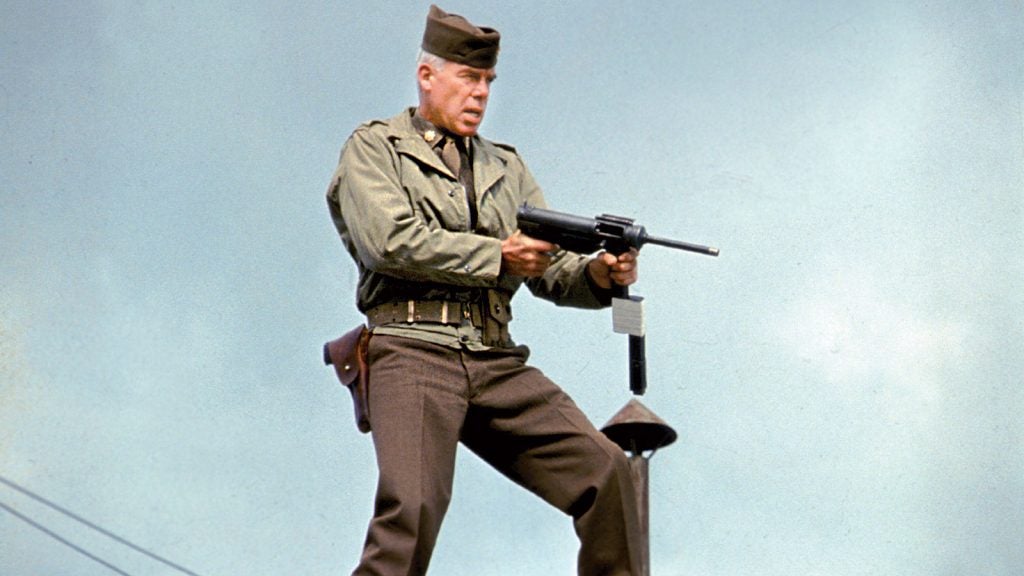BACK TO SUBGUNS? US Army Releases RFI for Sub Compact Weapons
The US Army’s PEO Soldier – Project Manager Soldier Weapons has issued an Request for Information (RFI) to obtain industry feedback on possible submissions to Sub Compact Weapons (SCW) evaluations. The specification details offered by the Project Manager Soldier Weapons (PMSW) are scant and extremely broad. Describing potential SCWs as being select fire weapons, chambered in 9x19mm and having MIL-STD 1913 rail (Picatinny Rail) space.
The RFI, published 2 May, makes no mention of physical dimensions such as size or weight and instead seeks to cast as wide a net as possible for potential submissions. It does, however, call for suppressors, spares and slings for the weapon (not holsters). Potential future SCW submissions will have to chamber ‘9×19 mm military grade’ ammunition – meaning both M882 ball and the new XM1153 Special Purpose 9mm Round from Winchester.
PMSW’s RFI is described as being for ‘planning purposes only’. The short weapon specification reads:
I. General
1. Delivery schedule of SCW to include but not limited to functional weapon, magazines, cleaning kits, suppressors, specialized tool kit (if required), spare parts, slings, carrying cases, manuals.II. Ammunition for SCW – Compatibility with 9×19 mm military grade will be required.
III. Sub Compact Weapon – The SCW will be a full/semi-automatic selectable variant that has a MIL-STD 1913 rail (Picatinny Rail).
Interestingly, ambidextrous controls are not an initial requirement and there is no mention of a folding stock. The 9x19mm requirement is likely to avoid the addition of a new ammunition type into the logistics chain, however, 9mm is unable to defeat even light body armour. The move leaves behind the former interest in small-calibre, high-velocity rounds, capable of defeating some body armour, such as FN’s 5.7×28mm and HK’s 4.6×30mm popular in the late 90s and 2000s.
While the RFI does not represent a solicitation notice or a call for submissions the Army is keen to learn what industry has to offer. It lays out a series of questions for industry representatives to respond to:
1. Given the conditions above, how many proposals (SCW systems) would you consider submitting?
2. Given the possible submissions that the vendor may decide to submit please provide technical information for each sub compact weapon.
a) Will your sub compact weapon be ambidextrous?
b) What safety testing has been conducted on your sub compact weapon system?
c) What is the price of your sub compact weapon and do you provide economy of scale?
3. Where are your production facility location(s)?
4. Please elaborate on each of these areas:
a) Past repair/refurbishment experiences with other state or federal Government agencies
b) Technical manual development experience
5. What is your warranty coverage?
The RFI gives interested parties until the 18 May to submit their responses. It remains to be seen what purpose the SCW would serve and to whom it might be issued. If earlier Army references to a Sub Compact Weapon system are to be believed the new weapon is likely destined for rear echelon troops – in the traditional PDW / submachine gun role.
Historically, the US Army has spent the last 50 years moving away from submachine guns, declining to replace the M3 Grease Gun in the mid-1950s, instead adopting the lightweight assault rifle concept. Some aged Grease Guns remained in service throughout Vietnam and well into the 1990s with armoured vehicle crews. This is not the first time the US Army has registered resurgent interest in a compact personal defence weapon. The 1990s saw US interest in NATO PDW trials and a PDW variant of the XM8 was developed. More recently in 2007, PEO Soldier’s former commander Brigadier General Mark Brown called for a PDW that was “larger than a pistol and smaller than a carbine”. Most recently SOCOM have been looking into .300 Blackout M4A1 Personal Defense Weapon Conversion Kits.
Any future US Army Sub Compact Weapon is likely to take the shape of a more conventional submachine gun than a conversion kit or small-calibre, high-velocity PDW. It appears that while the US Army pushes ahead with its futuristic Next Generation Squad Automatic Weapon, at the same time, it may also re-embrace the 100 year old submachine gun.
Source:
‘Request for Information for Sub Compact Weapons’, FedBizOps, retrieved 08/05/18 from source

